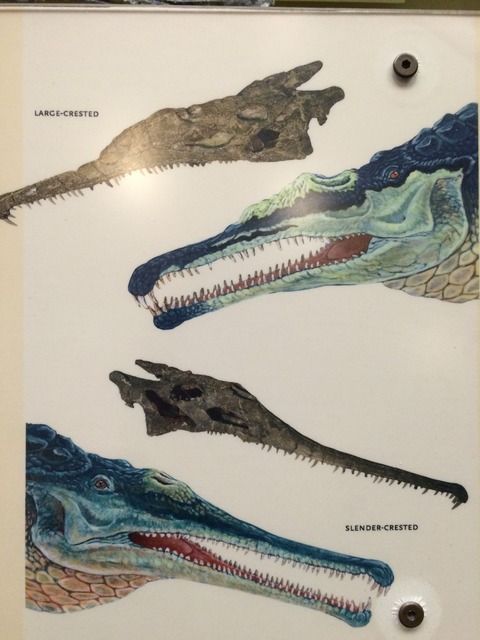Last month’s challenge brought out a few good guesses and two that were correct. However, like so many other times, only one person was the most correct. Last month that happened to be our resident paleontologist Isotelus with the more correct answer.
A phytosaur; I know there’s some reassigning going on, so Pseudopalatus/Machaeroprosopus? I don’t know species names, at least not for this genus.
This critter is indeed Machaeroprosopus buceros formally known as Pseudopalatus buceros. Red identified the wrong species name and I was unaware when I picked the critter that its genus had changed. Thus, Isotelus should get extra kudos. Honestly, I picked this obscure critter mainly so WarK would not get a third victory in a row.

(Taken at the New Mexico Museum of Natural History and Science)
M. buceros lived during the late Triassic 205 million years ago and is found only in New Mexico. However, Machaeroprosopus species are found through out the southwest of the U.S. M. buceros grew to 3-4 meters as adults. M. buceros was an aquatic predator that would have lived its life much like a modern crocodilian, which is catching fish or ambushing prey at the shoreline. During the late Triassic, a giant swamp covered most of what is now the modern southwest of the U.S. Several different species of aquatic predator are found throughout this area and time range.

(Taken at the New Mexico Museum of Natural History and Science)
Even though it looked very similar to modern crocodilians, M. buceros was a phytosaur, which are only distantly related to crocodiles, making this a classic case of convergent evolution. One of the easiest ways to tell the difference between a crocodilian and a phytosaur is where the nasal aperture is located. On a phytosaur, the nasal aperture is located on the back of the head near the eyes, while a crocodilian’s nasal aperture is located on the tip of their snouts. The specimens of M. buceros show sexual dimorphism in the skulls. There is a robust morph believed to be male and a gracile morph believed to be female. This is mainly based on our observations of crocodilians and their sexual dimorphism in which the males are the larger of the two.
Moving on to next month’s challenge:

(Taken at the New Mexico Museum of Natural History and Science)
Good luck to everyone that plays.